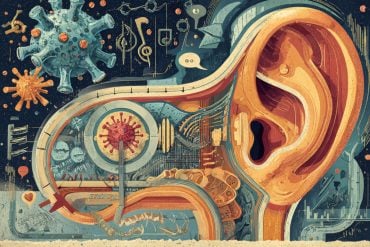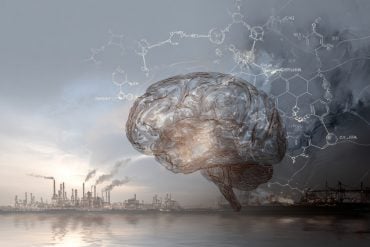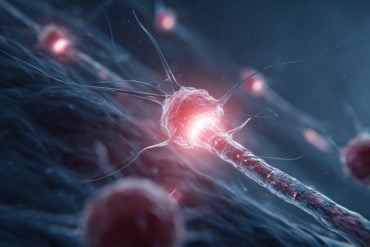Summary: A new study reveals a strategy for the development of new anti-aging therapeutics based on big data research from medical studies and biobanks.
Source: GERO.
Aging is the most important single factor behind chronic diseases and death. As “silver tsunami” approaches, healthcare and social protection systems face the looming crisis. By 2050, the global population of older persons is projected to more than double its size in 2015. New article published in Frontiers in Genetics by MIPT scientist Peter Fedichev describes a strategy for systematic development of novel anti-aging therapeutics and biomarkers of aging using the data from medical studies and large biobanks.
The mortality rate in humans increases exponentially with age and doubles approximately every eight years. The incidence of specific diseases, such as cancer or stroke, also accelerates after the age of 40 at about the same rate. Physical decline is usually seen as a natural consequence of aging, however, there is no biological law that makes it inevitable. In some species, death risks increase very slowly, stay constant for extended periods, or even decline with age. Some mammals, such as naked mole rats or the growing number of bat species, apparently lack mortality acceleration. This means that the mortality rate should be, in principle, a subject to manipulation.
The paper explains how the concept of criticality borrowed from physics of dynamic systems and widely used to model complex phenomena such as financial markets behaviour or weather conditions could be applied to aging studies and result in generation of models predicting biological age, aging rate and even potential targets for future anti-aging therapies. Successful applications of this approach by Dr. Fedichev’s research team include the biomarker of aging and frailty based on data from wearables and smartphones, and identification of experimental drugs extending lifespan in model organisms based on the transcriptomic signatures of longevity.

“The much anticipated 11th Revision of the International Classification of Diseases (ICD-11) introduced a number of aging-related conditions such as age-associated cognitive decline. This should facilitate new clinical trials and market authorization of therapies aimed at functional declines associated with aging. Among the most promising targets for the first anti-aging therapies are blood circulating molecules, since its vital role in aging is supported by experiments with young plasma transfusion”, explains Peter Fedichev, the author of the article and founder of Gero LLC, a longevity biotech company working on healthspan extension.
Funding: GERO LLC funded this study.
Source: Ksenia Tsvetkova – GERO
Publisher: Organized by NeuroscienceNews.com.
Image Source: NeuroscienceNews.com image is in the public domain.
Original Research: Open access research for “Hacking Aging: A Strategy to Use Big Data From Medical Studies to Extend Human Life” by Peter O. Fedichev in Frontiers in Genetics. Published October 23 2018.
doi:10.3389/fgene.2018.00483
[cbtabs][cbtab title=”MLA”]GERO”Hacking the Aging Code.” NeuroscienceNews. NeuroscienceNews, 26 November 2018.
<https://neurosciencenews.com/big-data-aging-10255/>.[/cbtab][cbtab title=”APA”]GERO(2018, November 26). Hacking the Aging Code. NeuroscienceNews. Retrieved November 26, 2018 from https://neurosciencenews.com/big-data-aging-10255/[/cbtab][cbtab title=”Chicago”]GERO”Hacking the Aging Code.” https://neurosciencenews.com/big-data-aging-10255/ (accessed November 26, 2018).[/cbtab][/cbtabs]
Abstract
Hacking Aging: A Strategy to Use Big Data From Medical Studies to Extend Human Life
Age is the most important single factor associated with chronic diseases and ultimately, death. The mortality rate in humans doubles approximately every eight years, as described by the Gompertz law of mortality. The incidence of specific diseases, such as cancer or stroke, also accelerates after the age of about 40 and doubles at a rate that mirrors the mortality-rate doubling time. It is therefore, entirely plausible to think that there is a single underlying process, the driving force behind the progressive reduction of the organism’s health leading to the increased susceptibility to diseases and death; aging. There is, however, no fundamental law of nature requiring exponential morbidity and mortality risk trajectories. The acceleration of mortality is thus the most important characteristics of the aging process. It varies dramatically even among closely related mammalian species and hence appears to be a tunable phenotype. Here, we follow how big data from large human medical studies, and analytical approaches borrowed from physics of complex dynamic systems can help to reverse engineer the underlying biology behind Gompertz mortality law. With such an approach we hope to generate predictive models of aging for systematic discovery of biomarkers of aging followed by identification of novel therapeutic targets for future anti-aging interventions.






